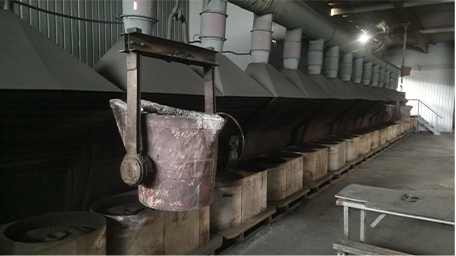Oct . 06, 2024 19:05 Back to list
how to clean rust off brake drums
How to Clean Rust Off Brake Drums
Rust on brake drums can be a common issue for vehicle owners, especially in areas where roads are treated with salt during winter months or where high humidity levels prevail. While a certain amount of surface rust is normal, excessive rust can interfere with the braking performance, leading to safety concerns. Therefore, it's essential to clean rust off your brake drums to ensure they function properly. This article will guide you through the necessary steps to clean rust off your brake drums effectively.
Understanding Brake Drums and Rust
Brake drums are essential components of your vehicle's braking system, primarily found in older vehicles or on the rear of some modern cars. They work by using friction to slow down or stop the vehicle. Rust can form on the surface of the drum due to exposure to moisture and air, which, if left untreated, can lead to pitting and further corrosion. Regular maintenance and cleaning can prevent these issues and extend the life of your brake drums.
What You Will Need
Before you begin the cleaning process, gather the following tools and materials - Safety goggles and gloves - Jack and jack stands - Lug wrench - Wire brush or steel wool - Sandpaper (medium and fine grit) - Brake cleaner spray - Clean rags or paper towels - Rust-inhibiting paint (optional)
Steps to Clean Rust Off Brake Drums
1. Safety First Park your vehicle on a level surface, engage the parking brake, and wear safety goggles and gloves to protect yourself from dust and debris.
2. Lift the Vehicle Using the lug wrench, loosen the lug nuts on the wheel covering the brake drum. Then, jack up the vehicle and secure it with jack stands. Ensure the vehicle is stable before proceeding.
3. Remove the Wheel Take off the wheel to expose the brake drum. Keep the lug nuts in a safe place, as you will need them to reattach the wheel later.
how to clean rust off brake drums

4. Inspect the Brake Drum Check for deep rust or pitting. If the surface appears relatively smooth with only light surface rust, you can proceed with cleaning. However, if the drum is severely damaged, consider replacing it.
5. Scrubbing the Rust Using a wire brush or steel wool, begin scrubbing the rusted areas of the brake drum. Apply pressure to remove as much rust as possible. It’s essential to focus on the areas where the rust is most pronounced.
6. Sand the Surface After scrubbing, use medium-grit sandpaper to smooth out the surface. Follow this up with fine-grit sandpaper to give it a smooth finish. Make sure to remove any debris left over from sanding.
7. Clean with Brake Cleaner After sanding, spray brake cleaner on the drum to remove any leftover dust or grease. Wipe it off with a clean rag or paper towel, ensuring that there is no residue left behind.
8. Inspect for Additional Issues Once the drum is clean, inspect the brake shoes and hardware. If they are excessively worn or contaminated with oil, consider replacing them to ensure optimal braking performance.
9. Optional Apply Rust-Inhibiting Paint If you want to prevent future rust, consider applying a rust-inhibiting paint specifically designed for brake components. Make sure to follow the manufacturer’s instructions and allow it to dry completely.
10. Reassemble the Wheel Once you are satisfied with the condition of the brake drum and have allowed any paint to dry, reattach the wheel. Hand-tighten the lug nuts before lowering the vehicle back to the ground.
11. Lower the Vehicle and Test Drive Once the vehicle is securely on the ground, tighten the lug nuts in a crisscross pattern for even distribution. Finally, take the car for a short test drive to ensure the brakes are functioning correctly.
Conclusion
Cleaning rust off brake drums is a straightforward process that can significantly enhance the safety and performance of your vehicle. Regular maintenance checks can prevent rust buildup and other brake-related issues. Remember, if at any point you are unsure about the condition of your brake components, it is always best to consult with a professional mechanic. Keeping your vehicle in top shape ensures not only your safety but also that of others on the road.
-
ROR Web Development: Build Fast, Scalable, Secure Apps
NewsAug.17,2025
-
Scania Brake Drums: OEM Quality for Optimal Safety & Durability
NewsAug.16,2025
-
R.V.I: Advanced Remote Visual Inspection for Precision
NewsAug.15,2025
-
Discover HYUNDA: Innovative Vehicles, Equipment & Solutions
NewsAug.14,2025
-
R.V.I: Unlock Advanced Insights & Real-time Performance
NewsAug.13,2025
-
Kamaz Brake Drum: Durable & Reliable for Heavy Duty Trucks
NewsAug.12,2025
